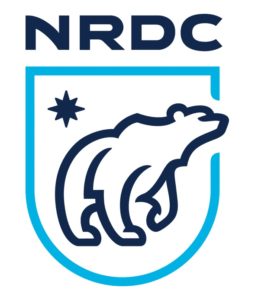
VfL Wolfsburg has traditionally had very close ties with society and, like traditional business enterprises, bears responsibility towards it (Corporate Social Responsibility, CSR). The association is aware of this responsibility for the effects of its actions on people and the environment and has therefore firmly anchored CSR in its self-image. Nationally and internationally, it wants to be perceived as a responsible player and thus take a leading position in professional football. Sustainability and CSR reporting is a central communication tool for the club. Its most important addressees include fans, employees, partners and sponsors of VfL and Volkswagen AG. It also addresses non-governmental organisations and interest groups as well as representatives of politics, science and research. Here is an overview of sustainability programme VfL Wolfsburg including report (2016) that was published in compliance with the Global Reporting Initiative (GRI) guidelines




Sustainability in professional football, a case study from the Bundesliga (German)
DetailsFootball is the number one sport in Germany. Millions of fans follow the matches every weekend: live in the stadium, in front of the TV or in the summary in the evening. The clubs in the 1st Bundesliga have long since ceased to be sports clubs.Football not only moves people, but also enormous sums of euros. And this is precisely where the present imug study comes in : For a long time now, companies have been called upon to take on corporate social responsibility (CSR). This responsibility must also be faced by football clubs, which have long since ceased to operate as charitable associations and are now generating millions of euros. It is not only about sporting success on the pitch.




Research: Measuring the environmental sustainability of a major sporting event: a case study of the FA Cup Final (2008)
DetailsThis paper demonstrates how the ‘Ecological Footprint’ has been used to measure the environmental sustainability of the UK’s Football Association (FA) Cup Final. This approach provides valuable insights into the global environmental impacts generated by visitor consumption patterns. The paper also demonstrates how this tool can support policymakers and event organizers in staging sustainable events through the development and assessment of policy scenarios.




As part of its commitment to environmental stewardship, the National Hockey League joined forces with NRDC on sustainability initiatives in 2008. This web-based resource offers environmental guidance and strategies to promote more sustainable practices for NHL team and arena operations.



The NBA began working with NRDC’s sports greening project in 2007 to enhance the environmental profile of the league. NRDC and NBA launched the league’s greening initiative by creating an environmental policy statement that established the league’s goal to improve their environmental performance, and presented their sustainability initiative as an institutional priority.




Since opening in the spring of 2000, AT&T Park has been home to the San Francisco Giants Major League Baseball team, which owns and operates the facility. The ballpark doubles as a venue for concerts, corporate programs and other sporting events, including pro soccer games, collegiate football games, and even big-air ski and snowboard contests. From day one the Giants have made environmental stewardship a business priority at the park by integrating sustainability into their company mission and operations. AT&T Park was the first major league ballpark to install a solar array and the first to receive LEED Silver Certification for existing buildings: operations and maintenance (EBOM). The Giants also divert the most waste from landfill of any professional sports venue in North America, with an 85.2 percent diversion rate for 2011. Here are some lessons from their greening successes to date.



The Philadelphia Eagles have been pioneers in the greening of professional sports operations and supply chains since establishing their Go Green program, with the help of the Natural Resources Defense Council (NRDC), back in 2003. From switching to recycled paper products nearly a decade ago to installing the most extensive onsite renewable system of any U.S. sports stadium in 2012, the Eagles work to promote the social, ecological and financial benefits of going green.




Thanks to the widespread public and professional interest in sustainability in the Northwest, environmental stewardship was built into CenturyLink Field even before the first U.S. sports greening programs were established. Back in 2000, 35 percent of the concrete from the Kingdome was recycled onsite to construct Seahawks Stadium (which has since been renamed “CenturyLink Field”).



The St. Louis Cardinals are one of the most award- winning teams in baseball. Since they joined the National League in 1892, the Cardinals have won 11 World Series Championships, 18 National League Pennants, 8 National League Central Division Titles, 3 National League Eastern Division Titles, and more than 9,300 games. The Cardinals have also been earning accolades for their green efforts, including the St. Louis Green Business Challenge Award of Achievement, the Missouri Waste Coalition Environmental Stewardship Award, and the Downtown St. Louis Community Improvement Sustainability Award.



The Bell Centre is the only professional sports venue in North America to be awarded three independent environmental certifications: LEED Silver for Existing Buildings (EBOM), ISO 14001, and Quebec’s ICI ON RECYCLE Level Three (the highest level). On October 13, 2009, the Canadiens became the first NHL team with a LEED-certified home arena and the first to achieve the LEED Silver level. A month later the Canadiens were also awarded the International Organization for Standardization’s 14001 certification for implementing an environmental management system (EMS). Three years later, the Canadiens are still expanding their green work, including planned renewal of their LEED EBOM certification in 2014.

